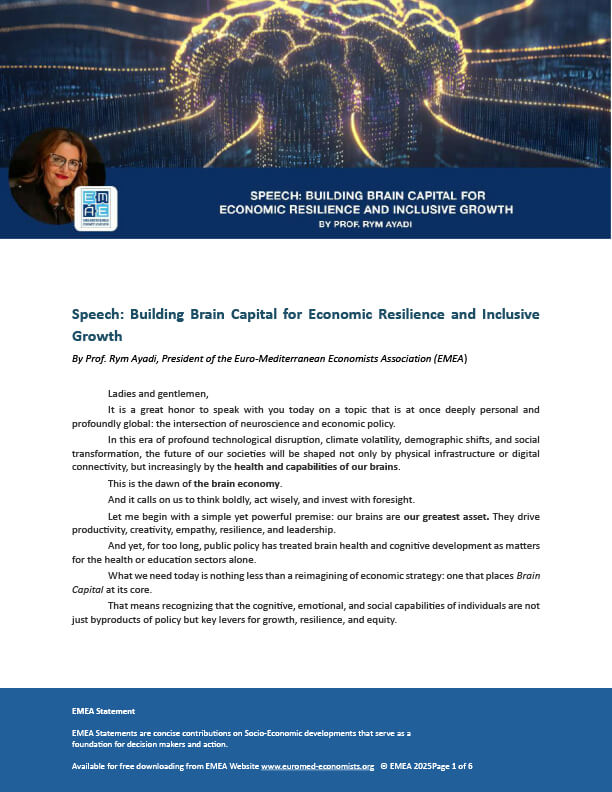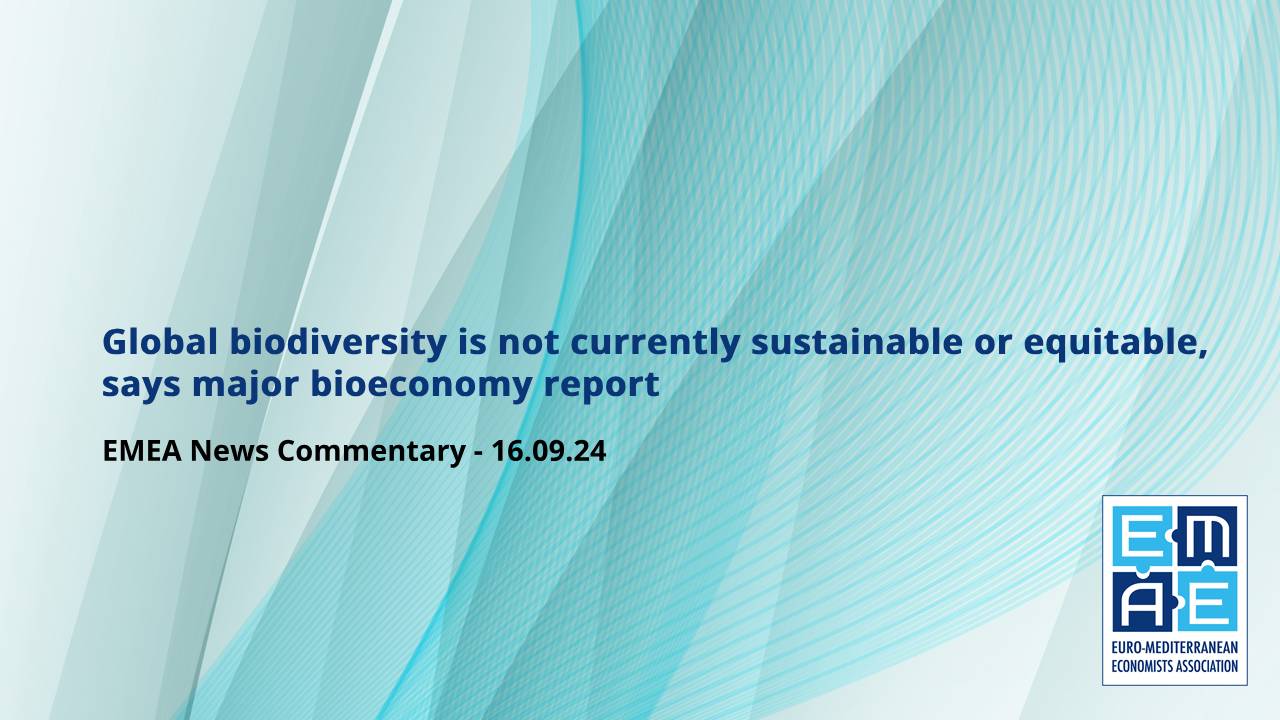A comprehensive report into the multi-trillion dollar bioeconomy says that global biodiversity is neither sustainable nor equitable in its current guise.
The ground-breaking publication ‘Financing a Sustainable Global Bioeconomy’ – a joint collaboration between NatureFinance and the World Bioeconomy Forum – provides independent input on the debate into the rapidly growing bioeconomy and its role in improving the global economy.
It discusses the current and prospective interplay in depth, between finance and the bioeconomy, believing the two are compatible but not necessarily currently aligned.
With sustainability at its heart, the bioeconomy is focussed on the use of renewable biological resources to produce food, energy and industrial goods.
The driving force behind the report’s publication has been the leadership role taken by Brazil in establishing the G20 Initiative on Bioeconomy in its G20 Presidency. This will possibly lead into South Africa’s G20 Presidency in 2025.
“We are convinced that the bioeconomy is a departure from the traditional linear economy, a new productive paradigm which affords science, technology, innovation and traditional knowledge the same respect,” the report outlined.
The document described the global bioeconomy as “a cornerstone in the transition to a more equitable, low-carbon and climate-resilient, nature-positive economy.”
Growing global acceptance of a sustainable bioeconomy
In a changing world, there was now a growing appreciation of how an equitable and sustainable bioeconomy could play a pivotal role in sustainable development, the report noted, with the clean tech revolution providing one viable pathway, especially for decarbonisation.
The authors said the discussion was fundamentally about the sustainable use of biological resources that could advance an equitable global economy. The key was how to turn the vision into practice.
“The bioeconomy holds cultural value, immense economic potential for significant job creation and economic growth,” said the document.
The paper emphasised that only one finite biodiversity existed, which was required to serve many purposes. But it was not currently doing so “in a sustainable, or equitable, manner.”
Everyone had “to respect and sustain nature’s stewards”, which were comprised mainly of indigenous peoples across the world, local communities and farmers.
Collective decision-making was needed to ensure biodiversity was used to maximum effect. It should be left “to those with most buying and political power.”
But this would only be possible if similar concepts, definitions and ways of measuring progress were implemented, the report suggested. “The bioeconomy has to be consciously and collectively imagined, developed and governed – and of course financed.”
Bioeconomy financing challenges
Financing the bioeconomy was “entirely possible” since it could draw on a wealth of existing sustainable finance instruments, alongside complementary policy and regulatory developments.
Nevertheless, bioeconomy financing challenges were considerable for a variety of reasons.
As an example, private investor interest in the socio-bioeconomy could be constrained by limited scale and restricted commercial rights over traditional knowledge.
“Nature-intensive bioeconomy enterprises, such as certified bio-products including food, chemicals and plastics, face unfavourable market conditions, often made worse by perverse fossil fuel and environmental subsidies,” the report warned.
Furthermore, early-stage businesses in the higher-tech bioeconomy often needed risk capital. This frequently crossed over into public funding support, “which is only available in some parts of the world, restricting opportunities in many parts of the Global South.”
Nevertheless, beyond conventional commercial financing channels, there were a host of existing ‘sustainable finance’ instruments that could be deployed in the bioeconomy, the report acknowledged.
The authors cited nature credits, as one example, including carbon and biodiversity credits. These could both augment revenues and provide long-term income security that de-risked and lowered the costs of capital.
Likewise, sustainability-linked financing instruments – especially in corporate and sovereign debt markets – could further reduce the cost of capital. This would encourage both so-called impact investors and those betting on the potential of bio-products in future, more sustainability-focused markets.
An integrated approach
Blended, public-private instruments also had an important role to play, which highlighted the importance of development finance institutions, to advance the bioeconomy in low to middle-income countries, the report said.
But any instruments should be set “within an integrated approach,” the paper advised. This would be “a pre-condition for success in scaling the bioeconomy as a route to addressing social equity, jobs, and nature and climate goals, especially in a world increasingly disrupted by climate change impacts.”
Connecting enterprise and market development with growing public awareness, suitable infrastructure and enabling fiscal arrangements, education and research institutions and capabilities, were the types of integrated approach which would be required, the authors recommended.
Investors would be more responsive to the bioeconomy where governments and regional bodies had introduced “integrated bioeconomy strategies and associated executable plans.”
Of lesser appeal to investors were isolated bioeconomy funds, high-level bioeconomy strategies that lacked market buy-in or execution capability and public support for new bioeconomy enterprises and sectors that didn’t enable trade policy.
To ensure a sustainable and equitable bioeconomy, national and regional strategies and actions were crucial, but they would have to be “complemented by global efforts.” At the same, international cooperation was key “for scaling the positive impacts of the bioeconomy and mitigating its risks.”
The large and rapidly growing bioeconomy
The report said that today’s global bioeconomy was valued at between US$4-5 trillion, with growth potential to reach US$30 trillion by 2050. This extended to a myriad of business sectors that encompassed biochemicals, bioplastics and even biogenetics.
“Despite significant data gaps and weaknesses, there is clear evidence of key growth drivers including climate, environmental and health concerns, increasingly embodied in market preferences and regulatory developments,” the publication noted.
There were clear signs that governments were keen to harness the bioeconomy’s potential, it continued. These included national and regional bioeconomy strategies, from countries such as Namibia and South Africa to Mexico and Brazil, as well as from India and China to Japan, the EU and the US.
But the bioeconomy had to be collectively imagined, developed, governed and financed. “We need a commonly agreed approach to managing the nexus between economic and livelihood priorities, and increasingly fragile biodiversity,” the authors advocated.
Brazil had raised the policy bar, encouraging international cooperation in advancing an equitable, sustainable bioeconomy through the G20.
“The G20 Initiative on Bioeconomy is an exemplary recognition of the need for collective action,” it acknowledged.
Coordinating role of the G20
Overall, for the bioeconomy to thrive globally, broader international policy orchestration was required to ensure effective and timely efforts.
Drawing on the lead taken by the Brazil Presidency, the report said the G20 was “the obvious platform to take on a broad international coordination role, given its thematic coverage, convening power and signalling influence.”
The G20 Global Bioeconomy paper had identified five common themes emerging from the literature, national and regional strategies and evidence from practice, namely: bioeconomy integration into economic, industrial and green growth plans; livelihoods and equity outcomes and opportunities; bioeconomy-enabling finance; facilitating biotrade; and bioeconomy measurement.
Today, the paper noted, G20 countries were actively debating and converging on a set of High-Level Principles for the Bioeconomy, which would “set a paradigm shift in our approach to economic growth, environmental protection, and social equity.”
The authors said these were some of the elements examined in the report that should encourage further debate, research and engagement by governments, academia, private sector and civil society.
‘Financing a Sustainable Global Bioeconomy’ was described as a valuable contribution that deserved broad circulation “to enrich the global dialogue on the bioeconomy.”
Understanding the role of finance and the instruments available to stimulate the bioeconomy was “fundamental to driving forward a bioeconomy that is positive for climate, nature and people,” the report urged.
Meanwhile, the Brazilian Presidency of the G20 extended “its heartfelt gratitude” to the group of 22 environmental and conservation organisations who had supported their stance on promoting the bioeconomy.
Note: NatureFinance is a Swiss-based, international not-for-profit organisation dedicated to aligning global finance with more equitable, nature positive outcomes. The World Bioeconomy Forum is a global platform dedicated to bringing together stakeholders in the circular bioeconomy to share ideas and promote bio-based solutions, with focus on bioresources, biotechnology and bioecology.
Additional information about the work of the World Bioeconomy Forum can be reviewed on https://wcbef.com
Related material can be downloaded at:
https://www.naturefinance.net/resources-tools/
https://www.naturemarkets.net/publications
https://wcbef.com/online-store





